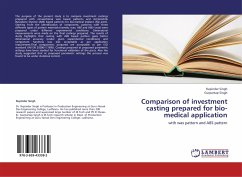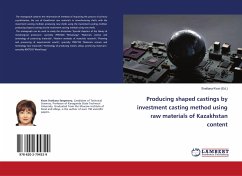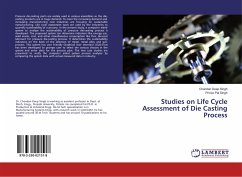In present work advancement in replication techniques for a biomedical component having a real 3D shape has been introduced. A hip joint was selected as one of a real 3D biomedical implant for this study. A hip joint, made of ABS material, was fabricated as a master pattern by fused deposition modelling (FDM) method. After this mold was made by the deposition of Primary, Secondary and Tertiary coatings with the addition of (1- 2cm in length) nylon fiber of 1.5D as per the Taguchi L9 control log of experimentation.This study outlines complete replication procedure of hip joint in detail from the master pattern to a final product with some investigation on mechanical and metallurgical properties. The results of study highlights that during shell production, fiber modified shells had a much reduced drain time. This gave a higher ceramic retention rate after dipping and led to a thicker coat compared to that produced without fiber addition.
Bitte wählen Sie Ihr Anliegen aus.
Rechnungen
Retourenschein anfordern
Bestellstatus
Storno








